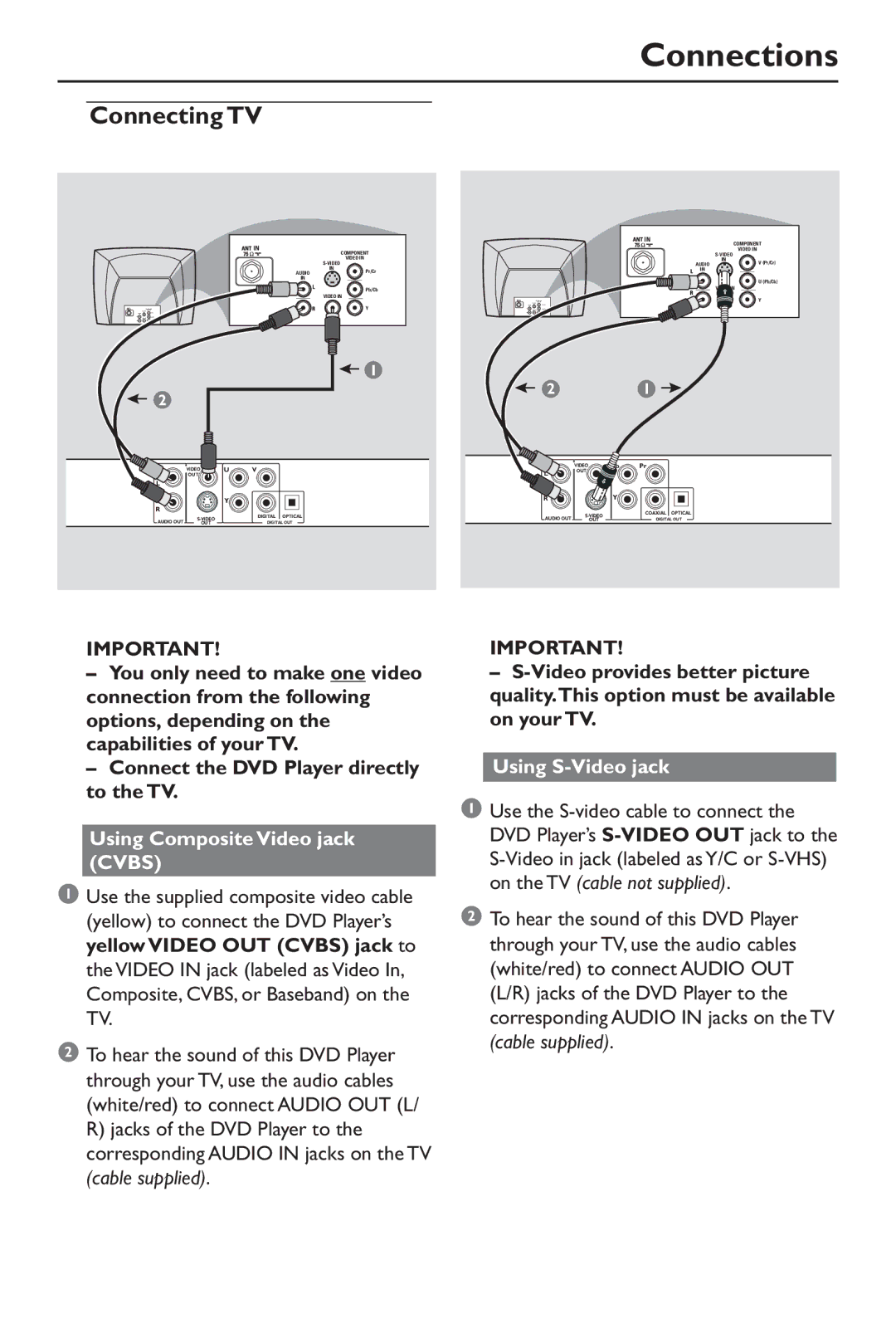
|
|
|
|
|
|
|
|
| Connections | ||
Connecting TV |
|
|
|
|
|
|
|
| |||
|
|
|
|
|
|
|
|
| IN | COMPONENT | |
|
|
| IN |
|
|
|
|
|
| ||
|
|
|
|
| COMPONENT |
|
|
| VIDEO IN | ||
|
|
|
|
|
|
|
|
|
| ||
|
|
|
|
| VIDEO IN |
|
| AUDIO | IN | V (Pr/Cr) | |
|
|
|
|
|
|
|
|
| |||
|
|
|
| AUDIO | IN | Pr/Cr |
|
| IN |
|
|
|
|
|
|
|
|
|
|
|
| ||
|
|
|
| IN |
|
|
|
|
|
| U (Pb/Cb) |
|
|
|
|
|
|
|
|
|
|
| |
|
|
|
|
|
| Pb/Cb |
|
|
| VIDEO IN |
|
|
|
|
|
| VIDEO IN |
|
|
|
| Y | |
|
|
|
|
|
|
|
|
|
|
| |
|
|
|
|
|
| Y |
|
|
|
|
|
|
|
|
|
|
| 1 |
|
|
|
|
|
2 |
|
|
|
|
| 2 |
|
| 1 |
|
|
|
|
|
|
|
|
|
|
|
|
| |
| VIDEO | U | V |
|
|
| VIDEO | Pb | Pr |
|
|
|
|
| L | OUT |
|
|
|
| |||
| OUT |
|
|
|
|
|
|
|
|
| |
L |
|
|
|
|
|
|
|
|
|
|
|
|
| Y |
|
|
| R |
| Y |
|
|
|
|
|
|
|
|
|
|
|
|
|
| |
R |
|
|
|
|
|
|
| COAXIAL OPTICAL |
|
| |
| DIGITAL | OPTICAL |
| AUDIO OUT |
| DIGITAL OUT |
|
| |||
AUDIO OUT | DIGITAL OUT |
| OUT |
|
|
| |||||
| OUT |
|
|
|
|
|
|
| |||
IMPORTANT!
–You only need to make one video connection from the following options, depending on the capabilities of your TV.
–Connect the DVD Player directly to the TV.
Using Composite Video jack (CVBS)
1 Use the supplied composite video cable (yellow) to connect the DVD Player’s yellow VIDEO OUT (CVBS) jack to the VIDEO IN jack (labeled as Video In, Composite, CVBS, or Baseband) on the TV.
2 To hear the sound of this DVD Player through your TV, use the audio cables (white/red) to connect AUDIO OUT (L/
R)jacks of the DVD Player to the corresponding AUDIO IN jacks on the TV (cable supplied).
IMPORTANT!
–
Using S-Video jack
1 Use the
2 To hear the sound of this DVD Player through your TV, use the audio cables (white/red) to connect AUDIO OUT (L/R) jacks of the DVD Player to the corresponding AUDIO IN jacks on the TV (cable supplied).
